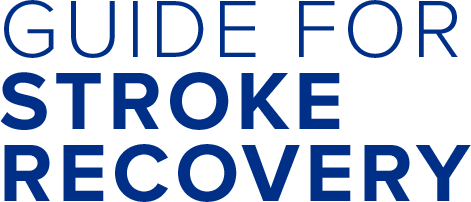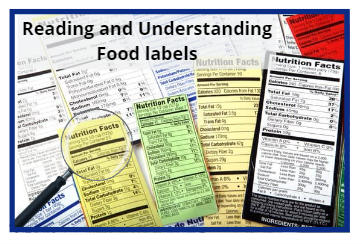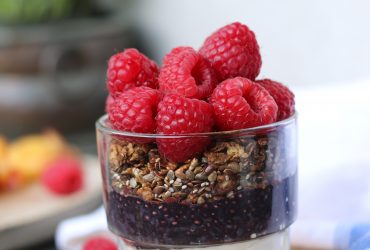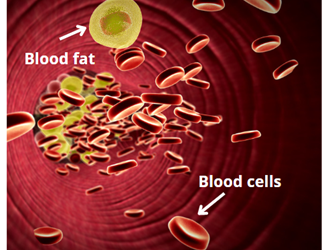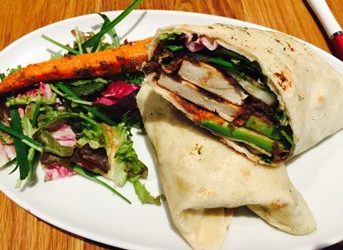Healthy eating and lifestyle habits can decrease your risk of stroke, heart disease, diabetes and obesity.
Healthy eating can:
- Improve your blood pressure, blood sugar, cholesterol and triglyceride levels
- Help you manage your weight and overall health
- Give you more energy for exercise and recreational activities
Using the ‘Action Plan for Healthy Eating’ can help you reduce your risk of stroke. Following the healthy food choices can help you:
- reach your targets for blood pressure, cholesterol, triglycerides and weight
- improve blood sugar control if you have diabetes
Making 1 or 2 changes per week is a great start!
Working with a Registered Dietitian can also help you meet your nutrition goals and help you identify food to limit .
Action Plan for Healthy Eating
| Healthy food choices for stroke prevention | Use this list to make 1 or 2 changes per week. Check off what you will commit to changing. |
| I can improve my blood pressure by making these choices | • Eat more fruits and vegetables • Include lower fat dairy products such as 1% milk or skim milk, cheeses with less than 15% M.F. (milk fat content), yogurt with 0% to 1% M.F. • Include whole grains • Choose fresh, unprocessed foods often • Flavour foods with spices, herbs, lemon and garlic instead of salt • Read food labels and choose foods lower in sodium (120 mg or less, or 5% Daily Value or less, per serving) |
| I can improve my cholesterol levels by making these choices | • Prepare foods with little or no oil by baking, steaming, sautéing, grilling or broiling • Use heart healthy fats and oils such as olive and canola oil, non-hydrogenated margarine, avocado, unsalted nuts and seeds in small amounts • Choose lean meats. Trim visible fat. Remove skin from chicken. • Choose low fat dairy products such as 1% milk or skim milk, cheeses with less than 15% M.F. (milk fat content), yogurt with 0% to 1% M.F. • Choose at least 2 vegetarian dishes per week such as tofu, beans and lentils • Eat more foods rich in soluble fibre such as oatmeal, oatbran, barley and psyillium (found in All Bran Buds™ cereal) |
| I can improve my triglyceride levels by making these choices | • Add 2-3 servings per week of fish rich in Omega-3 fats such as salmon, herring, trout, mackerel and sardines • Eat less sugar, honey, jam, jelly • Drink water and sugar-free beverages in place of fruit juice and regular pop • Drink less or avoid drinking alcohol |
| Choosing to follow a healthy eating plan will improve my weight and overall health | • Eat balanced meals by choosing a variety of healthy foods from Canada’s Food Guide • Include foods rich in fibre such as fruit and vegetables and whole grains • Eat 3 meals a day at regular times • Watch portion sizes • Take healthy snacks if needed such a vegetables, fruit or low fat dairy products • Have water in place of juice and regular pop |
Foods to Limit
| Consider limiting foods | Examples of foods you can try to limit |
| High in sodium (salt) | • Processed meats such as ham, deli meats, hotdogs, bacon, sausages • Canned soups • Salty snacks such as chips • Fast foods • Frozen dinners • Pickled foods • Salty dressings and sauces |
| With the words “trans fats” or “hydrogenated” in the ingredients | • Shortening • Certain margarines (read labels to choose non-hydrogenated ones) • Fast foodsStore bought baked goods Try to avoid these foods as they raise the bad LDL cholesterol and lower the good HDL cholesterol. |
| High in saturated fats | • Homogenized milk, high fat cheeses, butter and cream • Fatty meats and poultry skin • Palm and coconut oil |
| High in dietary cholesterol | • High fat dairy products • Organ meats such as liver • Eggs yolks (limit to 2 per week) • Shrimp and squid |
Building a Balanced Meal:
- ½ plate full of vegetables and fruit
- They are full of nutrients and fibre that helps you feel full
- ¼ plate of protein foods
- Include both plant-based and animal-based proteins like tofu, low-fat dairy products, lean meat and fish. Choose plant-based foods more often.
- Helps you build and maintain muscles, bones and skin
- ¼ plate carbohydrate foods
- Includes whole grains like brown rice, quinoa, oatmeal, and whole grain bread. Also includes starchy vegetables like potato and corn.
- Choose water as your drink of choice, or low-fat milk

Here is an example of what a balanced meal might look like:
To learn more about building healthy meals, check out Canada’s Food Guide.
Working with a Registered Dietitian can also help you meet your nutrition goals. Ask your doctor how to get connected with a dietitian.
Having read the information in this section, consider the following
- Do I know what a well-balanced meal is?
- Do I eat well-balanced meals?
- Do I need to change the way I eat to help prevent another stroke?
- Do I need information on how to prepare healthy meals?
- Do I need help preparing my meals?
